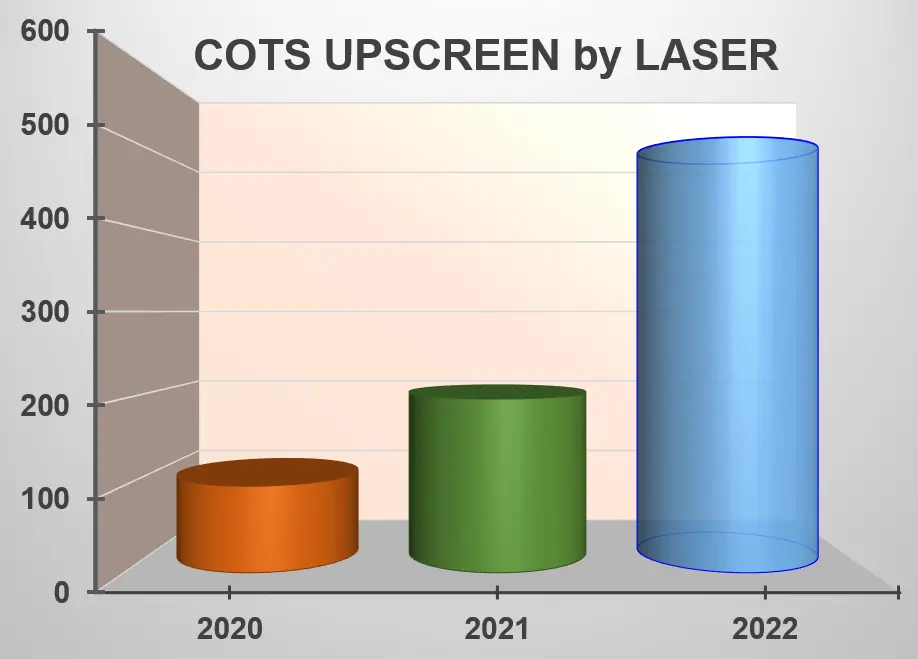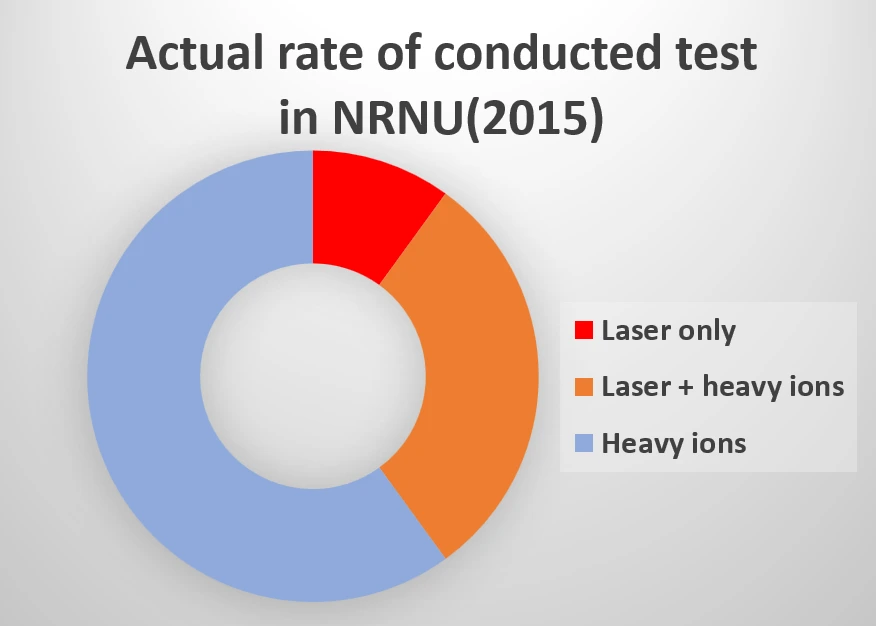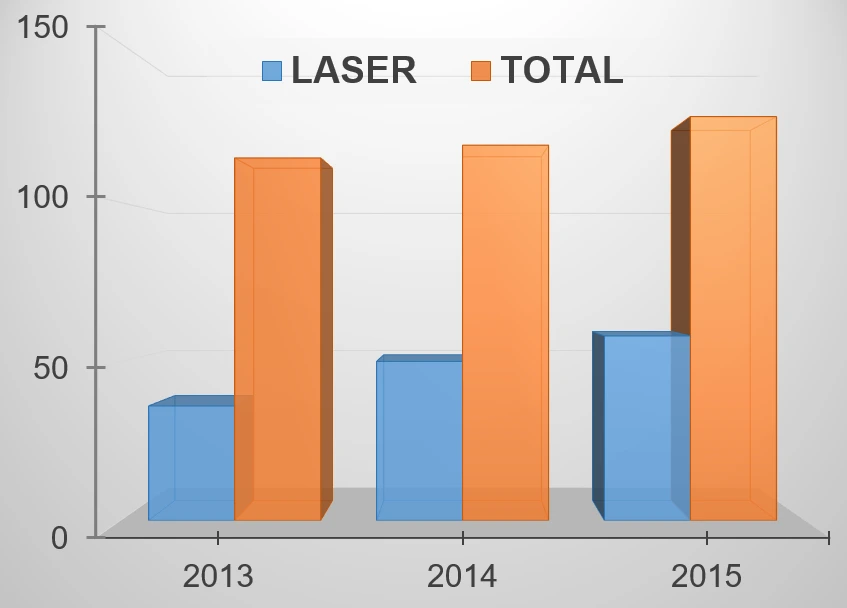This graph shows the number of laser tests performed on commercial off-the-shelf (COTS) devices by a Chinese institute from 2020 to 2022.
The number of laser evaluations on COTS devices increased significantly over the three years, with a particularly sharp rise between 2021 and 2022.
Laser technology is already being used worldwide as an alternative source to evaluate COTS. This is likely because laser testing can be performed at a relatively low cost.

2020-2022 COTS Devices for Laser Test in Chinese Institute
At a Russian institute, heavy ion testing is still the mainstream method, but Laser + Heavy Ion and Laser-only methods are also becoming increasingly important.
This reflects a strategic approach to conduct SEE radiation hardness evaluations for various electronic devices in a more flexible and cost-effective manner.
While the total number of SEE tests continues to grow, the proportion of laser-based tests is also rising.
The active adoption of laser evaluation in Russia reflects a strategy focused on both efficiency and speed of evaluation.
It is increasingly common in Russia to use lasers not only as a supplement but as a core part of SEE testing, in addition to heavy ions.
In particular, the high proportion of Laser + Heavy Ion usage suggests that a pre-screening process is conducted using lasers followed by validation with heavy ion testing to maximize cost-efficiency.

Actual rate of conducted tests in NRNU (2015)
|

Laser test fraction over the past three years at NRNU
|
Related Articles


